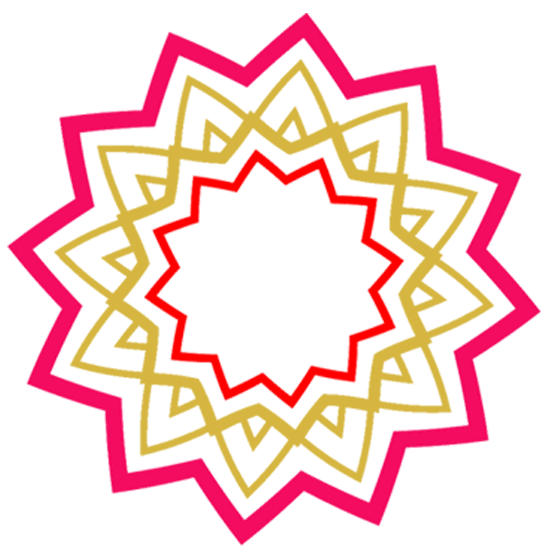If you run your own business or try to promote yourself as an individual, you’ll know that there is a tremendous amount of noise in the online world.
Why? Because you’re probably trying to cut through it ALL the time!
And since COVID, that noise has got even louder, as more and more people were forced to use online to get their audience’s attention.
We’ve all got used to attending virtual events over the last 18 months. And with global travel still very much off the agenda, there will be a need for them for some time to come.

It’s tough to use your brand voice and keep it consistent when dealing with a virtual world. Remember when ALL we could do to meet up with each other was on zoom? Argh, don’t remind me!
And while we are slowly getting back to a more normal way of living, virtual events are still an essential part of your business arsenal.
In fact, if you are business savvy in the slightest, you’ll know utilizing the online, virtual space is a huge opportunity to amplify your brand’s voice.
It’s an excellent way for you to build trust and enhance your likable factor. And you can also influence and sway your audience through thought leadership, speaking, and providing valuable and credible content.
So what has copywriting got to do with using online and virtual events to seek out and create more opportunities for your business? Actually, quite a lot. Read on!
Why Virtual Events Excelled – And How You Can Use Them
When the pandemic began, marketing budgets and marketing departments got the ax in many companies. If you’re wondering why I’m talking about this when I specifically do copywriting, copywriting is the bedrock of your marketing.
There were instances where many of you pulled up the drawbridge and battened down the hatches when it came to your marketing spend. However, this was ultimately the wrong thing to do. How do you keep communicating with your audience, and how does your audience know you’re there if you don’t speak to them?
Cutting the cord on your marketing, whether video content or written content, meant your audience suddenly didn’t even know you were there. The physical touchpoint was taken away through closure. Then you took away any other type of interaction as well.
One way savvy businesses stayed ‘open’ and afloat was to exploit the virtual events world. Whether that was YouTube classes or online meetings, cocktail hours, or get-togethers, it meant they kept a visual connection.
This allowed them to reach and amplify the voice of their business and brand – albeit on the now dreaded zoom.
And business owners could be more inclusive to not only their speakers but also their attendees. It also meant that businesses could forget about their expensive travel budgets. How many executives were missing the luxury of flying business class?!
Virtual events also allowed more opportunities to contribute and collaborate. This allowed more opportunities to build trust, amplify brand voice, grow influence, and be en point with the customer’s journey.
In the virtual world, audiences could converse. And they couldn’t face to face. Meanwhile, companies had to show a more authentic and empathetic side.
So how do you continue to work in this new world?
Using Thought Leader For Your Virtual Events
A thought leader within your business can be held up to demonstrate your accountability, likability, and credibility. They can help your target audience and customers and then allow you to know what they need and why and how your business is the answer. Your thought leader is a trusted source of inspiration and information.
They can showcase how fantastic your product or service is and also demonstrate how what you do is the solution that your audience needs. They also provide validation for what you are trying to achieve and prove that what you do what service or product you are offering was a good decision for your audience to buy.
Your audience might not just be made up of customers. It could also include industry experts and influences, as well as blogs and press. However, you always need to understand your customer’s journey. Who are your buyers and your prospects? Who do you see as your end-users? If you have a customer success team, they can enable you to find out who these end-users are. It may be in your sales process you are actually dealing with the end-user. So who is the person that you are dealing with?
You need to find out what keeps them up at night and how you can help them with your product or service. How do you do this? Just ask them!
This is where the voice of customer data becomes so important. And it’s why I use it as one of the main bedrocks of any brand voice and messaging guide I do for a business. Or when I am doing website copywriting.
So you know ‘where’ and you know ‘what.’ But you need to know ‘who’ your audience is. This is where you get your information – from the people who are purchasing your product or service. Is your audience will social media, for example. If so, which platform? What do they read? Who do they listen to? Are they attending events and conferences-wise? What podcasts do they listen to?
Create A Written Strategy For The Way You Speak
When I do brand voice and messaging guides – it’s all about finding everything you need to know about your customer. So you know them more intimately than your best friend. You need to know which of the platforms they use are going to leverage better for you. Is it your website? Is it your social media?
What do you want them to achieve? Do you want them to better understand what you’re giving them?
And then you take all this great information and use it. You give it to your thought leader so they can amplify your brand.
And if you get all this written down, it can act as a guide for how your business is perceived, how it connects, and what it sounds like to your audience.
You can build the content necessary for your thought leader to pack a punch.
By providing presentations and talking points, you are also giving consistency to all your messaging. Your brand voice guide can actually guide your thought leader, so you are consistent across every single area of your business.
It can make sure they know the pain points and can speak to them. This makes it really easy for them to be an amplifier for your brand.
And when you have had your events, you can ask the questions –
Did you close more deals?
Did they answer the questions of the audience?
Can you track who attended your talks?
Did the event make it meet your expectations?
While a lot of this may seem simple and even obvious, often, it’s something that’s overseen and unaccounted for.
If you want to talk more about creating a brand message guide so you have the right material for your virtual event or thought leader program, you can book a free consultation with me by clicking HERE.



Recent Comments